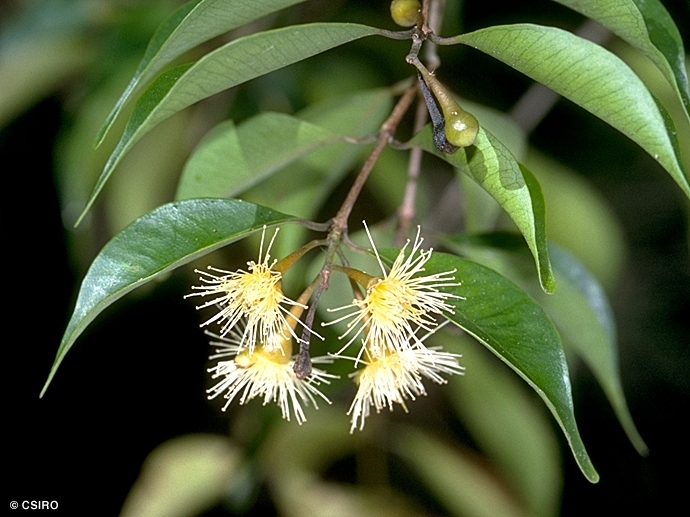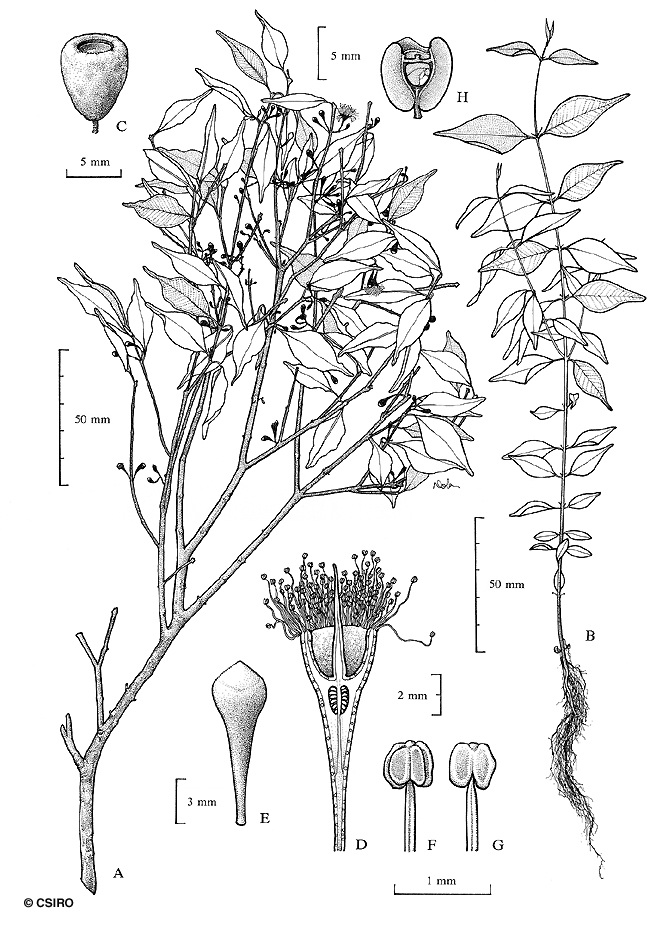Australian Tropical Rainforest Plants - Online edition
Syzygium canicortex B.Hyland






Hyland, B.P.M. (1983) Australian Journal of Botany Supplementary Series 9: 66. Type: A.K. Irvine 1123: State Forest Reserve 194, 22.i.1975 (holotypus (QRS).
Yellow Satinash; Satinash, Yellow; Watergum
Bark greyish brown, surface often marked by circular shallow depressions.
Leaf blades small, about 1.1-6.4 x 0.8-2.2 cm. Lateral veins scarcely visible on the upper surface. Oil dots large and conspicuous considering the size of the leaf.
Bracts caducous, absent at anthesis. Calyx tube (hypanthium) gradually tapering into the rather long pedicel, calyx tube (hypanthium) + pedicel about 6.5-9 mm long, calyx tube (hypanthium) about 2-4 mm diam., calyx operculate, circumscissile. Petals adhering to the underside of the calyx and shed with the operculum, petals +/- orbicular, about 1.5-2 mm diam., oil dots inconspicuous, about 20 per petal. Outer staminal filaments about 3.5-5 mm long, anthers about 0.3 x 0.4 mm, i.e. wider than long, opening in short slits, gland small, terminal. Ovules in two rows in each locule, about 12 per locule, placentas axile, ovules +/- horizontal to somewhat pendulous. Style about 4-7 mm long, approximating the stamens.
Fruits variable in shape, frequently pyriform, sometimes irregularly shaped to depressed globular, attaining about 6-9 mm diam., pericarp succulent, cells radiating from the testa to the exocarp. Seed solitary, attaining about 2-3 mm diam., often surrounded by spongy tissue which is separated from the succulent pericarp by a layer of thick walled fibres, seeds often polyembryonic, with two or more embryos per seed, testa adhering to the surrounding pericarp tissue but free from the uniformly textured cotyledons. Radicle position variable, cotyledonary stipules not visible.
This tree produces a useful structural timber, which is marketed as Yellow Satinash.
Wood specific gravity 0.70-0.73. Hyland (1983).





